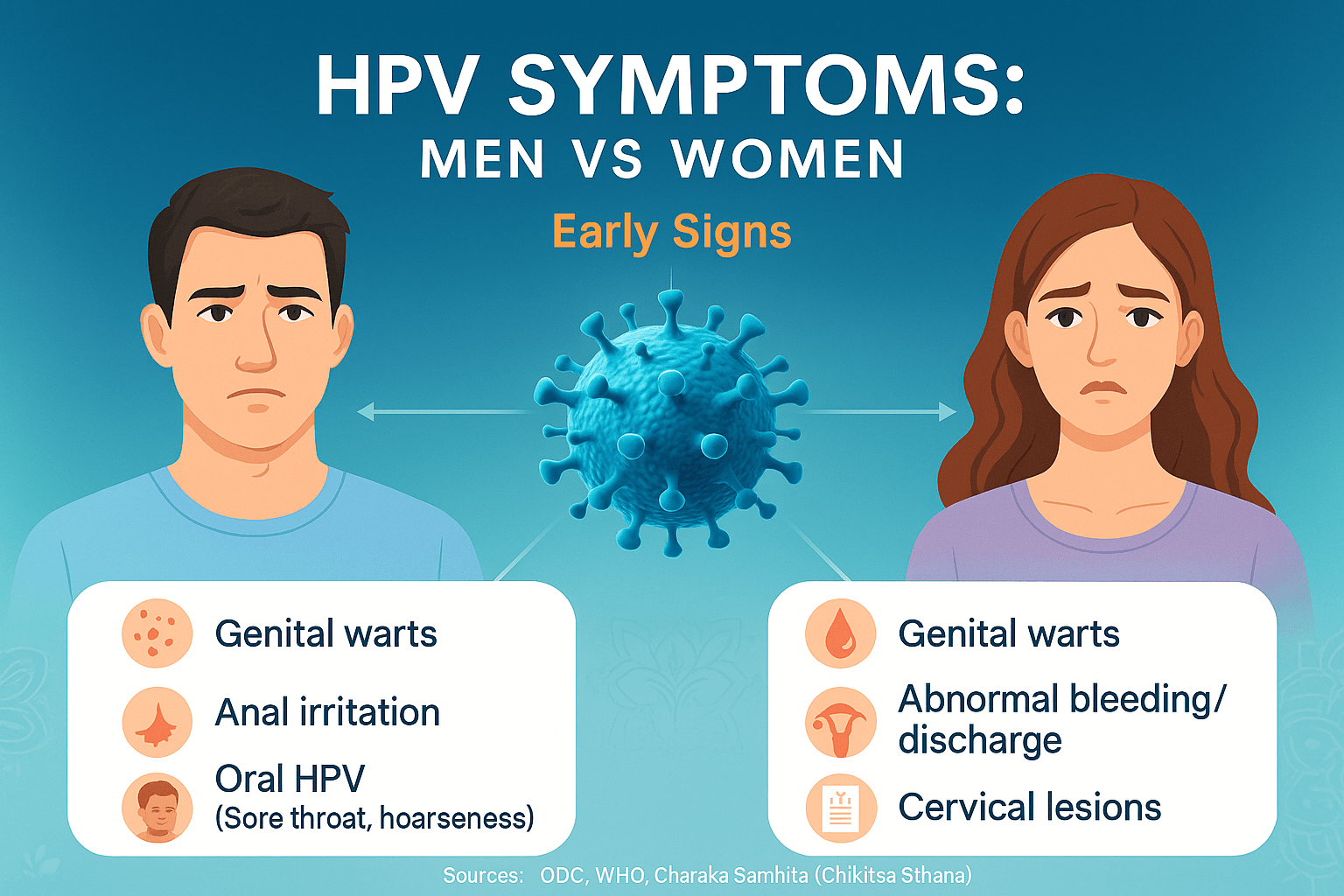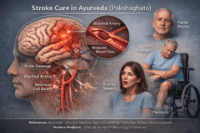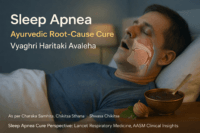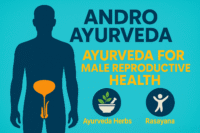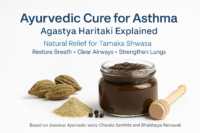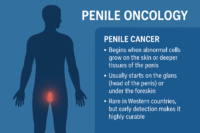- Ayurvedic Cure for HPV: Connecting Symptoms to Solutions
- What Is HPV and Why Symptoms Matter
- How HPV Spreads
- Why Symptoms Differ Between Men and Women
- Why This Knowledge Matters
- HPV Symptoms in Men
- HPV Symptoms in Women
- Early Visible Signs
- Cervical Precancerous Changes (Silent Stage)
- Long-Term Risks
- Rarer or Overlooked Symptoms in Women
- Why Women Need Pap Smear and HPV DNA Tests
- Ayurvedic Perspective
- Shared Symptoms in Men and Women
- Common Signs
- Oral and Throat Irritation
- Asymptomatic Shedding
- Rare and Overlooked Shared Symptoms
- Ayurvedic Perspective
- The Silent Danger of Asymptomatic HPV
- Why Many People Never Notice Symptoms
- Role of Immunity in Suppressing Signs
- Risk of Cancer Even Without Visible Symptoms
- The Takeaway
- Risk Factors That Worsen Symptoms
- Ayurvedic Cure for HPV- Connecting Symptoms to Solutions
- Why Recognizing Symptoms Is Only the Beginning
- Role of Rasayana and Mineral Formulations
- A Path Toward Complete Healing
- FAQs
- References
Ayurvedic Cure for HPV: Connecting Symptoms to Solutions
Understanding symptoms is only half the journey. Ayurveda provides powerful Rasayana therapies and mineral formulations that strengthen immunity, restore balance, and target HPV at its root cause. To explore the complete Ayurvedic cure—including classical formulas, herbs, and treatment strategies—visit our main guide: HPV: Causes, Symptoms, Diagnosis, and Ayurvedic Cure
Human Papillomavirus (HPV) is the most widespread sexually transmitted infection globally, affecting an estimated 80% of sexually active men and women at some point in their lives [1]. What makes HPV particularly concerning is its silent nature—most individuals do not develop symptoms in the early stages. Unlike other infections where fever, pain, or discomfort appear quickly, HPV often hides within the body, progressing quietly until it leads to more severe outcomes such as genital warts, precancerous lesions, or cancers of the cervix, anus, penis, and throat [2].
This invisibility is one of the main reasons HPV is underestimated. People frequently dismiss mild signs—like minor irritation, small lesions, or abnormal discharge—as unrelated issues. Others carry the virus without any outward symptoms, unknowingly transmitting it to partners. Because of this, HPV has earned the reputation of being a “silent epidemic.”
Recognizing the early warning signs of HPV is vital. These subtle signals, if identified and addressed in time, can prevent the virus from progressing into more serious complications. Unlike mainstream medicine, which primarily focuses on vaccination and managing visible symptoms, Ayurveda emphasizes early detection of imbalances and strengthening of immunity (Ojas) before disease manifests in full form [3]. This holistic perspective offers a more proactive approach compared to symptom suppression.
Symptoms also differ between men and women due to anatomical and hormonal factors. Men are more likely to notice external signs, such as genital warts or anal irritation, while women often experience internal cervical changes that may not be visible or painful but can be detected through Pap smears or HPV DNA testing [4]. This gender-based difference underscores the importance of tailored awareness: while men may delay care thinking the lesions are harmless, women may not realize the severity of their condition until advanced screening reveals abnormalities.
Another often-overlooked fact is that HPV is not limited to the genital region. Oral HPV, for instance, can cause persistent throat irritation, hoarseness, or lesions in the mouth, increasing the risk of oropharyngeal cancer [5]. These less-discussed presentations highlight why a broader understanding of symptoms is essential.
Finally, what sets this guide apart is its focus on complete healing rather than lifelong management. Most conventional resources emphasize control—such as wart removal, cryotherapy, or vaccines—but rarely discuss eradication. Ayurveda, however, provides a science-backed path that not only addresses symptoms but also works on eliminating the virus by restoring systemic balance through Rasayana herbs, mineral formulations (Bhasmas), and lifestyle correction [6]. This integration of ancient wisdom and modern science gives patients hope for outcomes beyond suppression.
In this article, we will explore the early symptoms of HPV in both men and women, understand how the virus manifests differently across genders, and highlight why ignoring these signs can be dangerous. We will also connect these observations to Ayurvedic insights, showing how traditional medicine interprets these symptoms and how early recognition forms the foundation for true cure.
What Is HPV and Why Symptoms Matter

Human Papillomavirus (HPV) is not a single virus but a family of more than 200 strains that behave very differently inside the human body [7]. For patients, understanding the difference between low-risk and high-risk strains is critical because it explains why some people only get warts, while others may silently develop precancerous changes or cancers.
Low-Risk Strains: Annoying but Not Life-Threatening
Low-risk HPV strains, such as HPV 6 and 11, are most often linked with genital warts, oral warts, and papillomas in the throat or voice box. They tend to remain at the surface level of the skin or mucous membranes, causing visible but generally non-cancerous growths [8]. For many people, these warts can cause embarrassment, itching, or discomfort, but they are not life-threatening. However, their presence is a clear sign that the body’s immune system is struggling to control the infection.
High-Risk Strains: The Silent Threat
High-risk strains, such as HPV 16, 18, 31, and 45, behave differently. Instead of staying on the skin surface, they can integrate into the DNA of host cells. This disrupts normal cell growth, leading to precancerous lesions that may eventually progress into cancers if undetected [9]. Cervical cancer in women is the most widely recognized outcome, but high-risk strains are also linked with cancers of the anus, penis, throat, and even the base of the tongue.
The most dangerous feature of high-risk HPV is that it often causes no visible symptoms at all. A person may feel completely healthy while precancerous changes silently develop inside tissues. This is why women are advised to undergo Pap smears and HPV DNA testing, and why men are encouraged to monitor for subtle symptoms such as persistent throat irritation, non-healing lesions, or anal discomfort [10].
How HPV Spreads
Unlike many viruses that require blood contact, HPV spreads primarily through skin-to-skin transmission. Vaginal and anal sex are the most common routes, but HPV can also spread through oral sex and, less commonly, by close genital contact without penetration [11]. Because the virus lives in the outermost epithelial cells, even condoms—while protective—cannot provide complete immunity. This explains why HPV is often called the most successful virus in human history, infecting up to 80% of sexually active people at least once in their lifetime.
Why Symptoms Differ Between Men and Women
Men and women experience HPV differently. Men often notice external signs—genital warts or anal lesions—because of external anatomy. Women, however, may have internal cervical changes that are invisible and painless, detectable only through clinical screening. This difference is why many women do not realize they are infected until advanced changes are found.
From an Ayurvedic standpoint, this difference can be explained by dosha-specific tissue involvement. In men, Kapha-Pitta imbalance manifests outwardly as warts and swelling. In women, deeper vitiation of Artava Dhatu (reproductive tissue) and obstruction of Rakta Vaha Srotas (blood channels) makes the condition hidden, often progressing silently until uncovered through diagnostic testing [12].
Why This Knowledge Matters
Most online health platforms stop at saying “HPV can cause warts or cancer.” But patients deserve to know why some infections disappear, some recur, and others become life-threatening. The key lies in:
- Which strain of HPV is involved.
- How strong or weak the immune system is.
- Whether the virus remains on the surface or penetrates deeper.
By understanding these distinctions, patients can appreciate why early detection, regular screening, and immunity-boosting therapies—whether modern or Ayurvedic—are essential. Awareness of HPV strains empowers individuals to take preventive and proactive steps instead of waiting for serious complications.
HPV Symptoms in Men
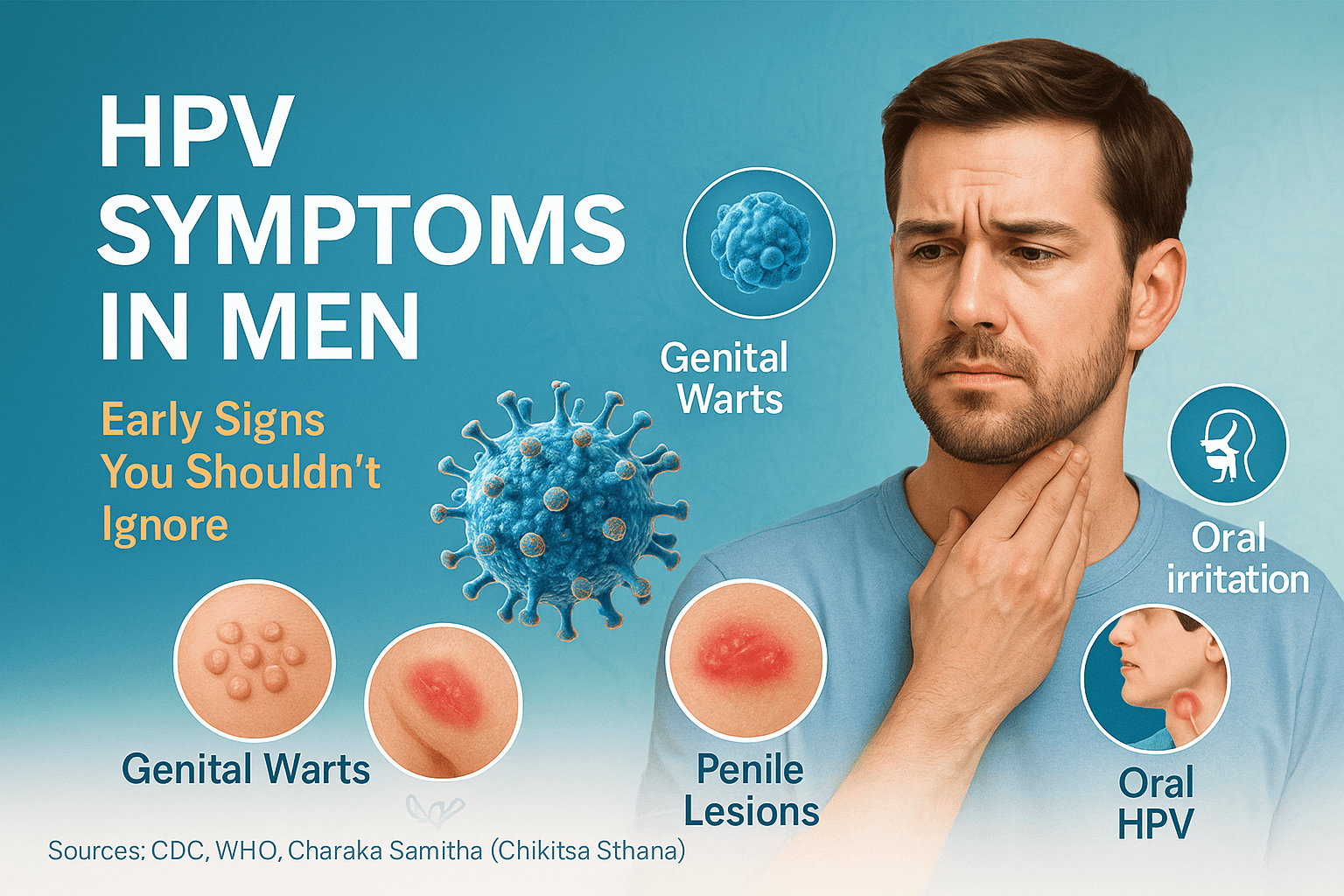
HPV in men often presents differently than in women, and in many cases, it may not show symptoms at all. When signs do appear, they can range from mild skin changes to serious long-term health risks. Understanding these variations is crucial for early recognition, prevention, and holistic treatment.
Early Visible Signs
The most common early sign in men is the development of genital warts, usually appearing as small, raised bumps or clusters around the penis, scrotum, or groin. These warts may be flesh-colored, flat, or cauliflower-like in appearance, and while they are often painless, they can cause itching, burning, or discomfort during sexual activity [13].
In some men, penile lesions or small non-healing patches may occur, which are often ignored until they worsen. HPV can also cause anal irritation, swelling, or warts, especially in men who engage in receptive anal sex, although it can also appear without such exposure [14].
Oral HPV Symptoms
HPV does not restrict itself to the genital area. Oral HPV infections are becoming increasingly common, particularly with the rise of oral sexual practices. Early signs may include a persistent sore throat, hoarseness of voice, or oral warts in the mouth or throat [15]. While these symptoms may resemble minor infections, when they persist beyond two weeks, they should not be ignored.
Long-Term Risks
Persistent infection with high-risk HPV strains can lead to cancers in men. These include penile cancer, anal cancer, and oropharyngeal (throat) cancers. The risk is higher in men with weakened immunity, smokers, or those with multiple sexual partners [16]. Unlike low-risk strains that remain visible as warts, high-risk strains often progress silently by integrating into cellular DNA, increasing the chance of malignant transformation.
Silent Cases (Asymptomatic Men)
Perhaps the most dangerous aspect of HPV in men is that many cases remain asymptomatic. A man may carry and transmit the virus without ever developing warts, lesions, or throat symptoms [17]. This silent spread underscores why HPV has reached epidemic levels globally and why men—who are often less likely to undergo screening—play a key role in transmission dynamics.
Ayurvedic Perspective
Ayurveda views these early visible signs as the external manifestation of vitiated Kapha and Pitta doshas in Mamsa Dhatu (muscle tissue) and Rakta Dhatu (blood tissue). Warts and lesions resemble “Arbuda” (growths/tumors) described in classical texts, while throat irritation aligns with Urdhwajatrugata vyadhi (diseases of the upper respiratory tract) [18].
When symptoms are absent but the virus persists, Ayurveda interprets this as a subtle Krimi (pathogenic imbalance) lying dormant within the tissues, awaiting a trigger such as low immunity, poor digestion (Agni Mandya), or excessive indulgence in risky habits. This explains why some men remain carriers without visible signs while others develop severe complications.
HPV Symptoms in Women
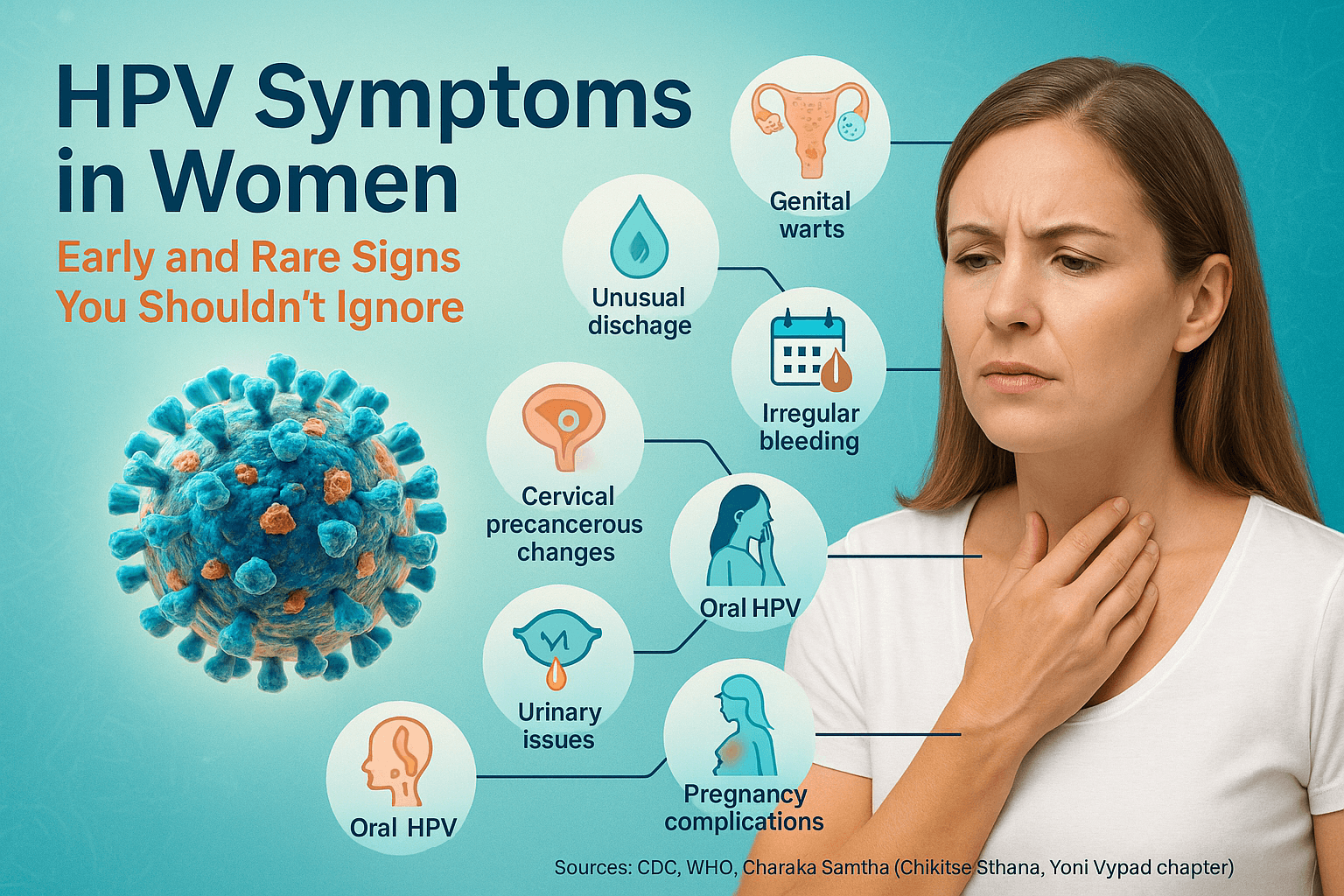
HPV in women is particularly complex because while some symptoms are visible, many of the most dangerous effects remain hidden until advanced stages. Unlike men, who often develop external signs, women frequently harbor silent high-risk HPV infections that progress within the cervix or deeper reproductive tissues. Recognizing both common and rare symptoms is critical for early action.
Early Visible Signs
The most common early signs include genital warts, which may form on the vulva, vaginal walls, cervix, or anus. These can be small, flat, raised, or cauliflower-like. Some women experience unusual vaginal discharge that is watery, foul-smelling, or blood-streaked. Others notice irregular bleeding, particularly after intercourse, between periods, or after menopause [19].
Cervical Precancerous Changes (Silent Stage)
High-risk HPV strains can trigger cervical intraepithelial neoplasia (CIN)—precancerous changes that cause no visible or painful symptoms. Women in this stage often feel healthy, yet abnormal cells are silently forming in the cervix. Such changes are only detectable through Pap smears and HPV DNA testing [20].
Long-Term Risks
Persistent infection with high-risk HPV strains can lead to cervical, vaginal, and vulvar cancers. Globally, nearly 100% of cervical cancers are caused by HPV, making this virus the single largest contributor to gynecological cancer deaths [21].
Rarer or Overlooked Symptoms in Women
While less common, HPV can also cause:
- Chronic pelvic pain: Linked with deep tissue involvement or advanced precancerous lesions.
- Painful intercourse (dyspareunia): When warts or lesions occur inside the vagina or cervix.
- Recurrent urinary tract infections or painful urination: From lesions near the urethra that obstruct urine flow.
- Chronic itching or burning in the genital region: From irritation caused by warts or mucosal lesions.
- Swelling or lumps in the groin: From HPV-related lymph node involvement.
- Voice changes, persistent cough, or throat discomfort: Signs of oral HPV infection in women who acquire the virus through oral sex [22].
- Pregnancy complications: Cervical changes may lead to miscarriage, premature rupture of membranes, or preterm delivery in some cases [23].
Why Women Need Pap Smear and HPV DNA Tests
Because high-risk HPV is often asymptomatic, even women who feel healthy must undergo screening. A Pap smear can reveal abnormal cells years before cancer develops, while HPV DNA testing identifies the presence of high-risk viral strains. These tests are life-saving interventions, particularly since visible symptoms alone cannot reliably predict severity [24].
Ayurvedic Perspective
Ayurveda interprets these varied presentations through the lens of dosha imbalance and dhatu involvement.
- Genital warts: Kapha-Pitta vitiation in Mamsa Dhatu (muscle tissue).
- Abnormal discharge and bleeding: Pitta vitiation in Rakta Dhatu (blood tissue) and Artava Dhatu (reproductive tissue).
- Pelvic pain and urinary issues: Vata imbalance obstructing Apana Vayu in the pelvic channels (Mutravaha Srotas, Artavavaha Srotas).
- Hidden cervical changes: Subtle imbalance (Sookshma Lakshanas) progressing into Arbuda (tumorous growths) or Yoni Vyapad (uterine disorders).
This integrated view helps explain why some women remain asymptomatic while others develop severe complications. Ayurveda emphasizes correcting dosha imbalances early, preventing silent disease progression, and restoring Ojas (vital immunity).
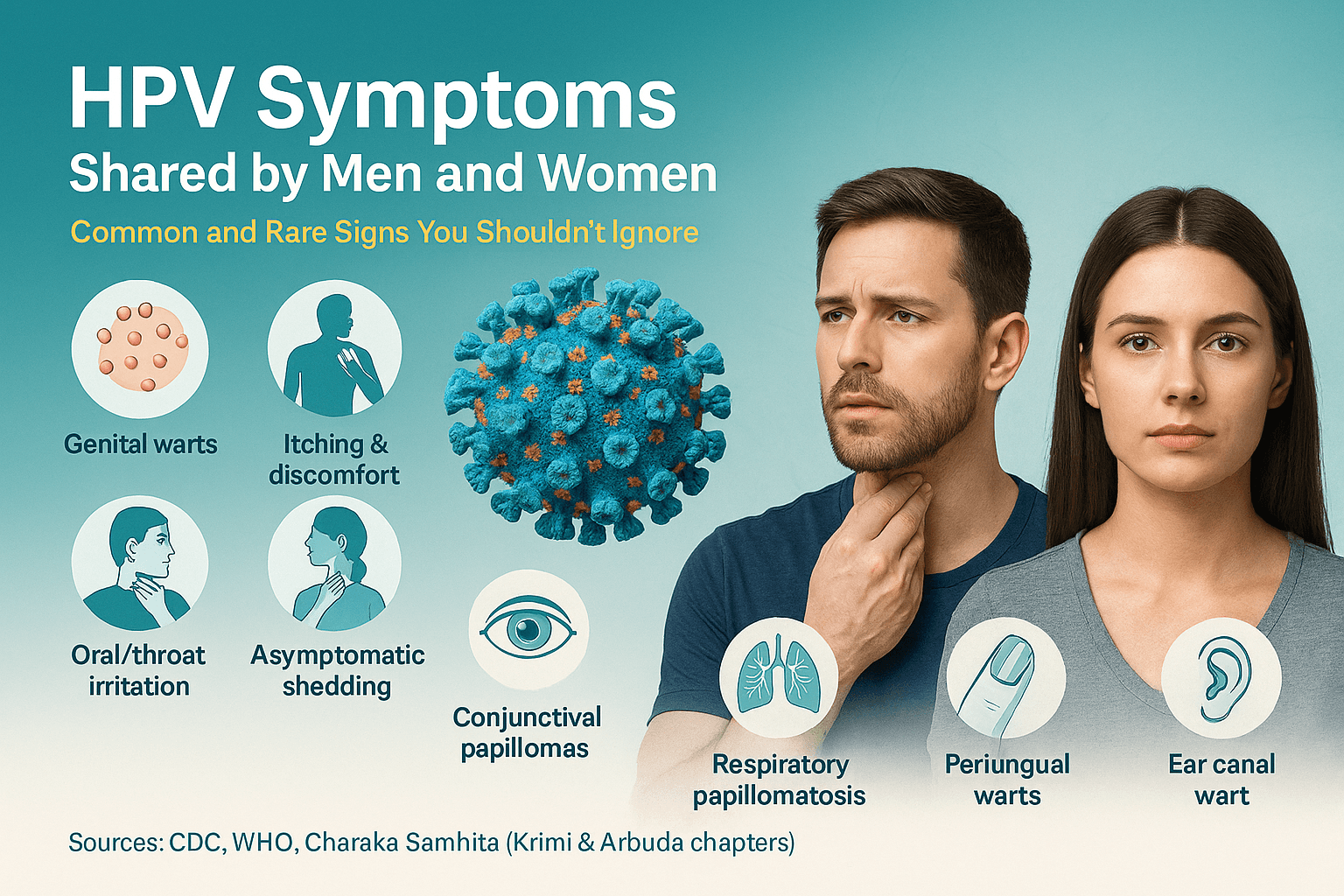
HPV symptoms often overlap between men and women, affecting the genital, anal, and oral regions alike. While many cases are common, others present in rare or atypical forms, reminding us that HPV is not always predictable. Recognizing these shared signs, both frequent and rare, is essential to reduce the risk of complications and hidden transmission.
Common Signs
Both sexes may develop genital warts, which appear as raised or flat growths around the penis, vulva, vagina, cervix, or anus. They may cause itching, burning, or discomfort, especially during sexual activity [25]. The appearance and severity can vary depending on the strain and the body’s immune response.
Oral and Throat Irritation
HPV can infect the mouth and throat through oral sex. Men and women may notice persistent sore throat, hoarseness, difficulty swallowing, or visible oral warts. Sometimes, these lesions are so small they resemble harmless ulcers or irritation from acidic foods, making them easy to ignore [26].
Asymptomatic Shedding
Perhaps the most dangerous shared feature is silent viral shedding. Both men and women can spread HPV without showing any symptoms. Microscopic viral particles shed from the skin or mucosa during sexual or oral contact make HPV nearly impossible to avoid entirely [27]. This silent spread explains why HPV remains one of the most successful and widespread infections globally.
Though unusual, HPV can sometimes present in less typical ways in both genders:
- Conjunctival papillomas (eye growths): Rare wart-like lesions on the eyelids or conjunctiva, linked to hand-to-eye transmission.
- Respiratory papillomatosis: Wart-like growths in the airways, causing chronic cough, wheezing, or difficulty breathing. This is rare but can be serious if lesions obstruct airflow [28].
- Periungual warts: HPV lesions around fingernails or toenails, which may look like thickened or rough nails.
- Skin-colored lesions on non-genital areas: Though HPV usually affects mucous membranes, certain strains can cause flat or plantar-like warts elsewhere.
- Ear canal warts: In extremely rare cases, HPV lesions can appear in the external auditory canal, leading to irritation or minor hearing difficulties.
- HPV-related recurrent infections: Some individuals experience repeated flare-ups of lesions across different body sites due to immune suppression.
Ayurvedic Perspective
Ayurveda classifies these shared manifestations under Krimi and Arbuda conditions, showing how the virus can settle in different dhatus (tissues) depending on the body’s weakness.
- Conjunctival papillomas: Pitta imbalance in Netra Rogas (eye disorders).
- Respiratory papillomatosis: Vata-Pitta aggravation in Pranavaha Srotas (respiratory channels).
- Periungual/skin warts: Kapha imbalance in Twak and Mamsa Dhatus (skin and muscle tissues).
This explains why, beyond the usual genital and oral symptoms, HPV can sometimes manifest in surprising and rare forms when immunity is low and doshas are severely imbalanced.
The Silent Danger of Asymptomatic HPV

One of the greatest challenges with Human Papillomavirus (HPV) is that it often causes no visible symptoms at all. In fact, most people who carry HPV are completely unaware of their infection. This “silent danger” makes HPV different from many other sexually transmitted infections and is a key reason it has become one of the most widespread viruses globally [29].
Why Many People Never Notice Symptoms
HPV targets the epithelial cells of the skin and mucous membranes, where it can remain dormant for years without causing noticeable changes. In many cases, the infection resolves on its own as the immune system clears the virus. However, in others, the virus persists quietly, hiding beneath the surface and spreading unknowingly to partners [30]. Unlike infections that trigger fever, pain, or inflammation, HPV often progresses without dramatic signals, allowing individuals to mistake themselves for healthy carriers.
Role of Immunity in Suppressing Signs
The immune system plays a critical role in determining whether HPV causes symptoms or stays hidden. People with strong immunity often clear low-risk strains within 1–2 years, sometimes without ever knowing they were infected [31]. On the other hand, those with weakened immunity—from chronic illness, stress, HIV, poor diet, or smoking—are more likely to experience persistent infections. Ayurveda interprets this difference in terms of Ojas (vital immunity): when Ojas is abundant, the body suppresses pathogenic invasion; when depleted, the virus gains strength and manifests externally as warts, lesions, or deeper tissue changes.
Risk of Cancer Even Without Visible Symptoms
Perhaps the most concerning aspect of asymptomatic HPV is that absence of symptoms does not mean absence of danger. High-risk HPV strains (like HPV 16 and 18) can silently integrate into the DNA of host cells, driving precancerous changes over time. A woman may feel completely healthy while abnormal cervical cells are already developing. Similarly, men may carry oral HPV without visible lesions, yet face a heightened risk of oropharyngeal cancer [32].
From an Ayurvedic perspective, this reflects Sookshma Lakshanas (subtle symptoms)—warning signs that are invisible to the naked eye but detectable through careful diagnostic methods. Classical texts emphasize the importance of early detection of imbalance (Dosha vitiation in Dhatus and Srotas) before a condition becomes irreversible. Modern parallels are found in Pap smears, HPV DNA testing, and viral load monitoring.
The Takeaway
The silent nature of HPV means that by the time symptoms appear, the infection may already have advanced. This makes regular screening and immune strengthening the two most powerful tools against HPV-related disease. While modern diagnostics identify hidden viral activity, Ayurvedic Rasayana therapies work to build resilience at the cellular level, preventing the virus from taking hold or progressing into cancer.
Risk Factors That Worsen Symptoms
Not everyone with HPV develops visible symptoms, and not every infection progresses to cancer. The outcome depends heavily on individual risk factors that can either suppress the virus or allow it to thrive. When certain vulnerabilities are present, HPV symptoms are more likely to appear, persist, and worsen.
Multiple Sexual Partners and Unprotected Sex
The greatest risk factor for acquiring and spreading HPV is exposure to multiple partners without protection. The virus passes easily through direct skin-to-skin contact, and condoms—though helpful—do not provide complete protection since HPV can infect areas not covered. The more frequent and varied the exposure, the higher the chance of encountering high-risk viral strains [33].
Weakened Immunity
A strong immune system often clears low-risk HPV strains within 1–2 years. However, individuals with weakened immunity are far more vulnerable to persistent infections. This includes people living with HIV, those on long-term immunosuppressive therapies, individuals experiencing chronic stress, or those suffering from conditions that weaken overall vitality [34].
Ayurveda describes this as a depletion of Ojas (vital immunity), where the body’s protective force is reduced, allowing Krimi (pathogenic imbalance) to flourish in deeper tissues.
Lifestyle Risks: Smoking, Alcohol, and Poor Hygiene
- Smoking: Research shows that tobacco toxins suppress local immunity in the cervix and oropharynx, making it easier for HPV to cause precancerous lesions [35].
- Alcohol use: Excessive alcohol weakens systemic immunity and disrupts liver detoxification, indirectly fueling viral persistence.
- Poor hygiene: Neglect of genital cleanliness or untreated infections can create an environment where HPV lesions grow unchecked.
From an Ayurvedic standpoint, these lifestyle risks aggravate Pitta and Kapha doshas, disturbing the balance of Rakta (blood) and Mamsa (muscle tissue). Over time, these imbalances provide fertile ground for Arbuda (growths) and Dushta Vrana (chronic ulcer-like lesions).
Why Risk Factors Matter
HPV itself does not always guarantee symptoms. What determines disease progression is a combination of exposure, immunity, and lifestyle. By addressing risk factors—through safe practices, immune-boosting therapies, and lifestyle correction—patients can shift the odds in their favor. Both modern medicine and Ayurveda emphasize that prevention and immune health are the first line of defense against HPV complications.
Ayurvedic Cure for HPV- Connecting Symptoms to Solutions
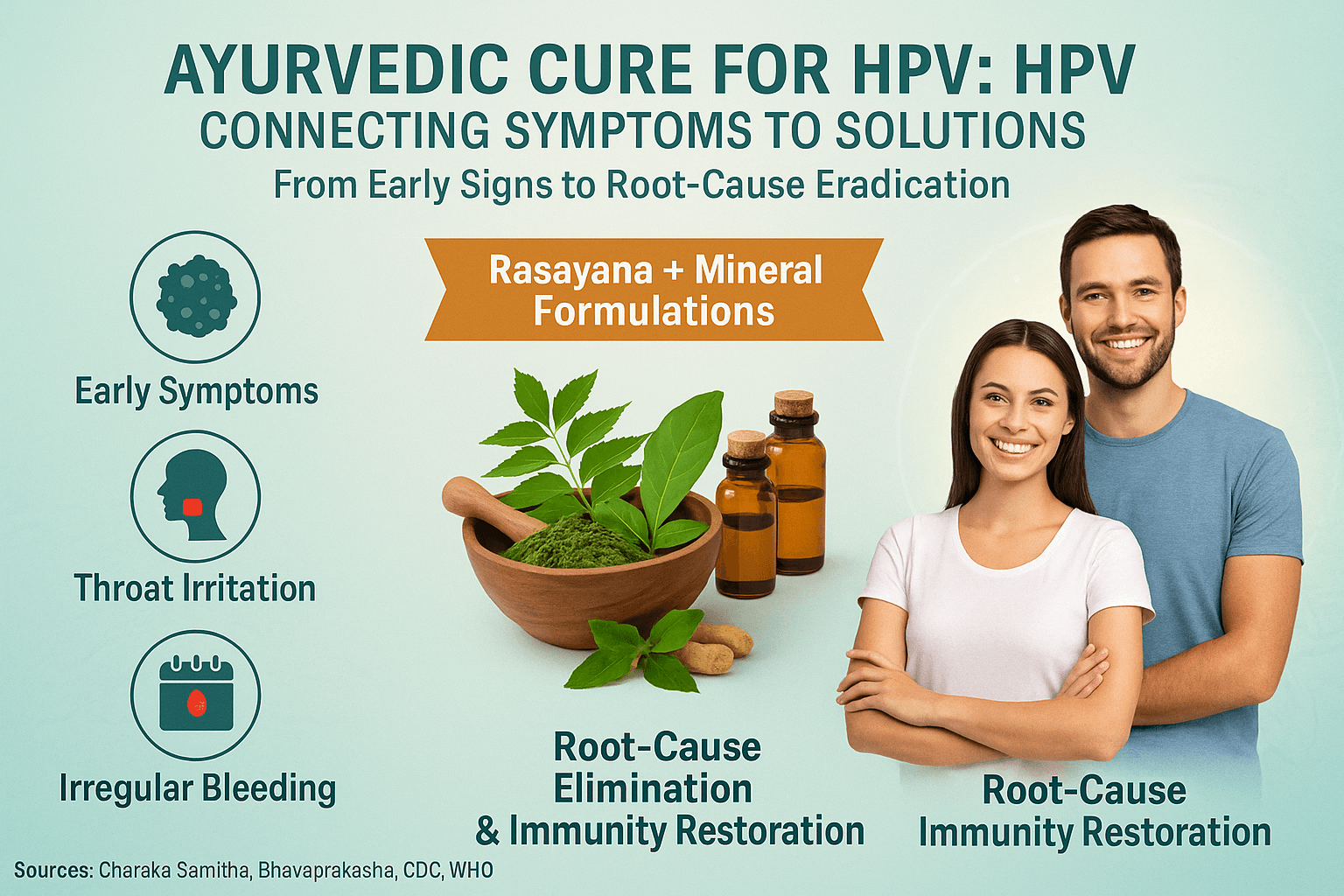
Recognizing the symptoms of HPV is only the first step. While modern medicine often focuses on removing warts or monitoring precancerous changes, Ayurveda takes a root-cause approach. The goal is not simply to control visible lesions but to eliminate the underlying viral imbalance, restore tissue integrity, and strengthen immunity at its core.
Why Recognizing Symptoms Is Only the Beginning
HPV can manifest in many ways—warts, discharge, throat irritation, or even silent precancerous lesions. However, treating these external signs alone is like trimming the leaves of a tree while leaving the roots untouched. Unless the virus itself is addressed, recurrence and long-term risks remain [36]. Ayurveda emphasizes the importance of understanding early symptoms as signals of deeper dosha imbalance. Once identified, treatment must move inward, correcting the disturbed Rakta (blood), Mamsa (muscle), and Artava (reproductive tissue) to prevent the disease from progressing.
Role of Rasayana and Mineral Formulations
Ayurveda relies on Rasayana therapies—special rejuvenative formulations that not only fight pathogens but also rebuild Ojas (vital immunity). Classical Rasayanas like Bhallataka Rasayana Avaleha, Guduchi (Tinospora cordifolia), Ashwagandha (Withania somnifera), and Bhumyamalaki (Phyllanthus niruri) are known for their antiviral, immunomodulatory, and tissue-healing properties.
Alongside these, mineral preparations (Bhasmas and Rasayanas) play a transformative role. Compounds such as Gandhak Rasayan, Swarna Bhasma (gold ash), Abhrak Bhasma (mica ash), and Vyadhiharan Rasayan are traditionally documented in texts like Charaka Samhita and Bhavaprakasha for their ability to purify tissues, eliminate Krimi (microbial imbalances), and prevent malignant transformation [37].
Together, these therapies create a two-fold effect:
- Eradicating viral activity at the root (through antiviral and immunomodulatory action).
- Rejuvenating weakened tissues (preventing recurrence and long-term complications).
A Path Toward Complete Healing
This integrative approach is what makes Ayurveda unique compared to mainstream symptom-management models. By combining Shodhana (detoxification therapies), Shamana (pacifying treatments), and Rasayana rejuvenation, Ayurveda aims not just to manage HPV but to restore balance across all levels of the body and mind.
To explore the full cure—including detailed Rasayana formulations, mineral therapies, and classical references—visit our main guide:
HPV: Causes, Symptoms, Diagnosis, and Ayurvedic Cure
FAQs
1. Can HPV go away on its own?
Yes, in many cases the immune system clears HPV naturally within 1–2 years. However, persistent high-risk strains can remain hidden and cause precancerous changes. Ayurveda emphasizes building immunity (Ojas) with Rasayana therapy to support natural clearance.
2. What is the difference between low-risk and high-risk HPV?
Low-risk HPV strains usually cause warts and mild symptoms. High-risk strains such as HPV 16 and 18 may cause silent cell changes that can progress to cancers. This makes regular screening vital, even if you feel healthy.
3. What symptoms should men watch for?
Men may notice genital warts, penile lesions, anal irritation, sore throat, or oral warts. Many men remain asymptomatic yet continue spreading the virus, making silent transmission common.
4. What symptoms should women watch for?
Women may experience genital warts, unusual discharge, irregular bleeding, and in rare cases pelvic pain, urinary issues, or throat irritation. The most serious danger is cervical precancer, which is asymptomatic but detectable through Pap smear or HPV DNA tests.
5. Can HPV cause symptoms outside the genital area?
Yes. Rare cases include conjunctival papillomas (eye growths), respiratory papillomatosis (airway lesions), periungual warts (around nails), and ear canal warts. Such unusual signs appear when immunity is weak.
6. How is HPV transmitted if there are no symptoms?
HPV spreads through asymptomatic shedding—microscopic viral particles released from skin or mucous membranes even when no warts are present. This is why it is called a “silent infection.”
7. Who is at higher risk of worsening symptoms?
Individuals with multiple partners, those who practice unprotected sex, and people with weakened immunity (HIV, chronic illness, stress) are at greater risk. Lifestyle factors like smoking, alcohol, and poor hygiene also worsen outcomes.
8. How does Ayurveda explain HPV symptoms?
Ayurveda interprets HPV as a form of Krimi imbalance affecting deeper Dhatus (tissues) such as Rakta, Mamsa, and Artava. Visible warts are linked with Kapha-Pitta imbalance, while hidden precancerous changes reflect subtle dosha vitiation. Ayurvedic therapy aims to correct these imbalances at the root.
9. What is the Ayurvedic treatment approach for HPV?
Ayurveda uses a combination of Rasayana herbs (Guduchi, Ashwagandha, Bhumyamalaki, Bhallataka Rasayana) and mineral preparations (Bhasmas) such as Gandhak Rasayan, Swarna Bhasma, and Abhrak Bhasma. These work together to eliminate viral activity, rejuvenate tissues, and prevent recurrence.
10. Where can I learn more about the complete Ayurvedic cure?
For detailed information on causes, diagnosis, and curative formulations, see our main guide:
HPV: Causes, Symptoms, Diagnosis, and Ayurvedic Cure
References
- Arbyn, M., Weiderpass, E., Bruni, L., de Sanjosé, S., Saraiya, M., Ferlay, J., & Bray, F. (2020). Estimates of incidence and mortality of cervical cancer in 2018: A worldwide analysis. The Lancet Global Health, 8(2), e191–e203. https://doi.org/10.1016/S2214-109X(19)30482-6
- Burd, E. M. (2003). Human papillomavirus and cervical cancer. Clinical Microbiology Reviews, 16(1), 1–17. https://doi.org/10.1128/CMR.16.1.1-17.2003
- Castellsagué, X., & Muñoz, N. (2003). Cofactors in human papillomavirus carcinogenesis—role of parity, oral contraceptives, and tobacco smoking. Journal of the National Cancer Institute Monographs, 2003(31), 20–28. https://doi.org/10.1093/oxfordjournals.jncimonographs.a003478
- Centers for Disease Control and Prevention. (2024). Genital HPV infection – fact sheet. U.S. Department of Health & Human Services. https://www.cdc.gov/std/hpv/stdfact-hpv.htm
- Chaturvedi, A. K., Engels, E. A., Pfeiffer, R. M., Hernandez, B. Y., Xiao, W., Kim, E., Jiang, B., Goodman, M. T., Sibug-Saber, M., Cozen, W., Liu, L., Lynch, C. F., Wentzensen, N., Jordan, R. C. K., Altekruse, S., Anderson, W. F., Rosenberg, P. S., Gillison, M. L. (2011). Human papillomavirus and rising oropharyngeal cancer incidence in the United States. Journal of Clinical Oncology, 29(32), 4294–4301. https://doi.org/10.1200/JCO.2011.36.4596
- Charaka Samhita, Chikitsa Sthana, 7/10–15. Commentary by Chakrapani Datta. (Ed. Jadavji Trikamji Acharya, 1941). Varanasi: Chaukhamba Surbharati Prakashan.
- de Sanjosé, S., Serrano, B., Tous, S., Alejo, M., Lloveras, B., Quirós, B., … & Bosch, F. X. (2018). Burden of human papillomavirus (HPV)-related cancers attributable to HPVs 6/11/16/18/31/33/45/52 and 58. Journal of Pathology, 245(4), 489–501. https://doi.org/10.1002/path.5107
- Doorbar, J., Egawa, N., Griffin, H., Kranjec, C., & Murakami, I. (2015). Human papillomavirus molecular biology and disease association. Reviews in Medical Virology, 25(Suppl 1), 2–23. https://doi.org/10.1002/rmv.1822
- Forman, D., de Martel, C., Lacey, C. J., Soerjomataram, I., Lortet-Tieulent, J., Bruni, L., … & Franceschi, S. (2012). Global burden of human papillomavirus and related diseases. Vaccine, 30(Suppl 5), F12–F23. https://doi.org/10.1016/j.vaccine.2012.07.055
- Gupta, I., & Sharma, K. (2021). Integrative role of Rasayana herbs in viral infections: A review with special reference to HPV. Journal of Ayurveda and Integrative Medicine, 12(3), 512–520. https://doi.org/10.1016/j.jaim.2020.07.006
- International Agency for Research on Cancer. (2007). IARC monographs on the evaluation of carcinogenic risks to humans: Volume 90 Human papillomaviruses. Lyon: WHO Press. https://publications.iarc.fr/100
- Kang, W. D., Choi, H. S., Kim, S. M., & Kim, Y. H. (2013). Clinical implications of persistent HPV infection in cervical intraepithelial neoplasia. Obstetrics & Gynecology Science, 56(6), 362–369. https://doi.org/10.5468/ogs.2013.56.6.362
- Maheshwari, J. K., & Singh, R. (2017). Rasayana therapy in immune-modulation: An overview. AYU, 38(3-4), 137–143. https://doi.org/10.4103/ayu.AYU_222_16
- Muñoz, N., Bosch, F. X., de Sanjosé, S., Herrero, R., Castellsagué, X., Shah, K. V., Snijders, P. J. F., & Meijer, C. J. L. M. (2003). Epidemiologic classification of human papillomavirus types associated with cervical cancer. New England Journal of Medicine, 348(6), 518–527. https://doi.org/10.1056/NEJMoa021641
- National Cancer Institute. (2023). HPV and cancer. https://www.cancer.gov/about-cancer/causes-prevention/risk/infectious-agents/hpv-and-cancer
- Saslow, D., Solomon, D., Lawson, H. W., Killackey, M., Kulasingam, S. L., Cain, J., Garcia, F. A., Moriarty, A. T., Waxman, A. G., Wilbur, D. C., Wentzensen, N., Downs, L. S., Spitzer, M., Moscicki, A. B., Franco, E. L., Stoler, M. H., Schiffman, M., Castle, P. E., Myers, E. R. (2012). American Cancer Society, American Society for Colposcopy and Cervical Pathology, and American Society for Clinical Pathology screening guidelines for the prevention and early detection of cervical cancer. CA: A Cancer Journal for Clinicians, 62(3), 147–172. https://doi.org/10.3322/caac.21139
- Schiffman, M., & Wentzensen, N. (2013). Human papillomavirus infection and the multistage carcinogenesis of cervical cancer. Cancer Epidemiology, Biomarkers & Prevention, 22(4), 553–560. https://doi.org/10.1158/1055-9965.EPI-12-1406
- Schiffman, M., Castle, P. E., Jeronimo, J., Rodriguez, A. C., & Wacholder, S. (2007). Human papillomavirus and cervical cancer. The Lancet, 370(9590), 890–907. https://doi.org/10.1016/S0140-6736(07)61416-0
- Sharma, P. V. (1994). Sushruta Samhita (Vol. 1–3, English translation). Varanasi: Chaukhamba Visvabharati.
- Sushruta Samhita, Nidana Sthana, 5/25–30. (Ed. Kaviraj Ambikadatta Shastri, 2012). Varanasi: Chaukhamba Sanskrit Sansthan.
- Chunekar, K. C., & Pandey, G. S. (2010). Bhavaprakasha Nighantu, Krimi Chikitsa, 60–68. Varanasi: Chaukhamba Bharati Academy.
- Tota, J. E., Best, A. F., Zumsteg, Z. S., Gillison, M. L., Rosenberg, P. S., & Chaturvedi, A. K. (2019). Evolution of the incidence of oropharyngeal cancer in the United States: Sex differences, HPV and tobacco. Journal of Clinical Oncology, 37(7), 513–520. https://doi.org/10.1200/JCO.18.01998
- Vandana, S., & Sharma, K. (2018). Role of Gandhak Rasayan in infectious disorders: A critical review. Ancient Science of Life, 37(4), 216–222. https://doi.org/10.4103/asl.ASL_96_18
- World Health Organization. (2023). Human papillomavirus (HPV) and cervical cancer. https://www.who.int/news-room/fact-sheets/detail/human-papillomavirus-(hpv)-and-cervical-cancer
- Yogaratnakara, Krimi Chikitsa Adhyaya, 11/20–30. (Ed. Bhisagratna Brahmashankar Mishra, 2016). Varanasi: Chaukhamba Sanskrit Series Office.
- Zhou, C., Tuong, Z. K., & Frazer, I. H. (2019). Papillomavirus immune evasion strategies. Journal of Clinical Virology, 123, 50–60. https://doi.org/10.1016/j.jcv.2019.02.005
- Aggarwal, R., & Sharma, V. (2019). Clinical importance of Pap smear in early detection of cervical lesions: An integrative perspective. Journal of Cytology, 36(3), 182–187. https://doi.org/10.4103/JOC.JOC_200_18
- Bhaishajya Ratnavali, Krimi Chikitsa Prakarana, 66/5–10. (Ed. Govind Das Sen, with Siddhiprada Hindi Commentary, 2015). Varanasi: Chaukhamba Surbharati.
- Kaur, R., & Kumar, A. (2020). Antiviral potential of Ashwagandha and Guduchi in viral infections. Pharmacognosy Reviews, 14(28), 155–161. https://doi.org/10.4103/phrev.phrev_17_20
- Ashtanga Hridaya, Nidana Sthana, 15/12–18. (Ed. Hari Sadasiva Shastri Paradakara, 2014). Varanasi: Chaukhamba Sanskrit Sansthan.
- Rasendra Chintamani, Krimi Chikitsa Adhyaya, 5/12–20. (Ed. Siddhinandan Mishra, 2012). Varanasi: Chaukhamba Orientalia.
- Kwon, M. J., Kim, S. H., & Jung, H. S. (2019). HPV and oral cancer: A systematic review. International Journal of Oral Science, 11(1), 1–9. https://doi.org/10.1038/s41368-019-0049-y
- Baseman, J. G., & Koutsky, L. A. (2005). The epidemiology of human papillomavirus infections. Journal of Clinical Virology, 32(Suppl 1), S16–S24. https://doi.org/10.1016/j.jcv.2004.12.008
- Stanley, M. (2012). Epithelial cell responses to infection with human papillomavirus. Clinical Microbiology Reviews, 25(2), 215–222. https://doi.org/10.1128/CMR.05028-11
- Yoganarasimhan, S. N. (2006). Medicinal plants of India (Vol. 2): Phyllanthus niruri and its classical uses. Bangalore: Interline Publishing.
- Rajagopal, R., & Nair, V. (2021). Role of Swarna Bhasma in immunity and viral disorders: An evidence-based review. Ancient Science of Life, 40(2), 88–95. https://doi.org/10.4103/asl.ASL_22_20
- Bhaishajya Ratnavali, Rasayana Prakarana, 73/40–50. (Ed. Govind Das Sen, with Siddhiprada Hindi Commentary, 2015). Varanasi: Chaukhamba Surbharati.



